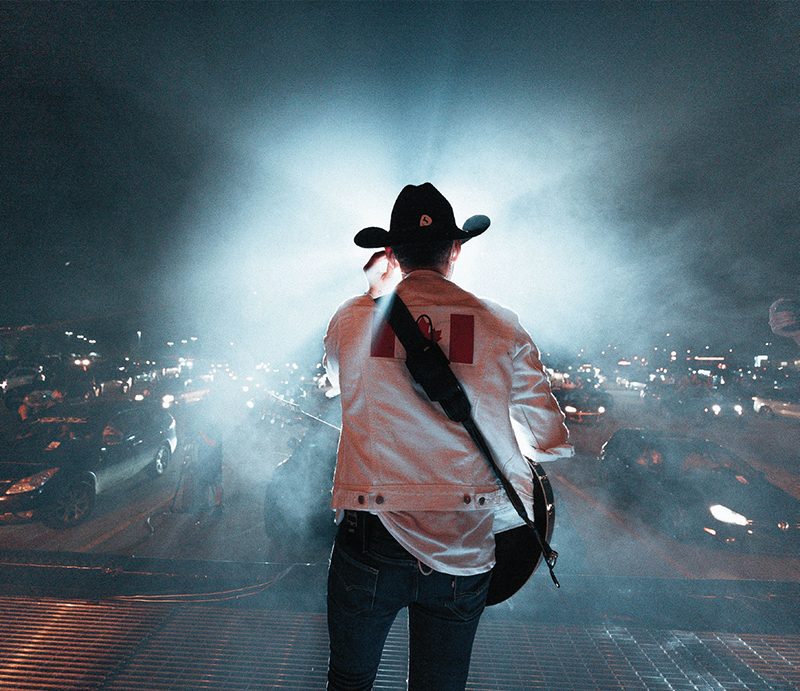
The band, all seasoned live performers and accomplished studio musicians, prefer a quiet stage, Bundy explains: “Side fills usually piss them off, but in this case one of our guitarists actually asked for more bass on his side of the stage. Front to back we were just trying to make it as comfortable as a normal show for everyone.”
Although both Bird and Bundy regularly specify DiGiCo SD12s this was Bundy’s first time running 96k and using the 32-bit cards. “Like I say, the band are all studio guys and very particular about what they want. They pay attention to the gear I’m using and have their top three consoles. This time they came up to me and were like, ‘this is number one.’ And I pretty much maxed it out. We have a 40-channel input list, but I’m duplicating and tailoring things a lot and have several vocal channels for Brett’s vocal and five BGs so I can get everyone exactly what they want.”
Running A Marathon
There was a bit more required in the way of frequency coordination than usual as well, given that there were a substantial number of media outlets covering the show as well as film crew making a documentary about the event. Still, Bundy says, for him it was pretty much par for the usual concert course.
Bird concurs – beyond some wind and rain that interrupted the shows on the first day, “It went flawlessly,” he says. “But for me it was a matter of sitting, mixing and listening. For the band and Brett, playing and singing for four hour-long shows, two days in a row – particularly when you’re coming from time off – it’s like running a marathon without having run at all for a while.”

There were also some nerves owing to the fact that the first Edmonton show was to be broadcast regionally on 840 CFCW and across Canada on Stingray Music. Luckily, there was ample time to set up and test the system, extensive cooperation and advice from CFCW, and broadcaster’s on-site technician Doug Mattice and program director Jackie Ray Greening.
“The station was involved from the beginning and not only on the radio broadcast side,” Moore says. “Jackie essentially acted as our health advisor through the whole process as well, by consulting regularly with Alberta public health. She was an incredible asset.”
Greening was also key to keeping Industry Canada in the loop about the broadcast itself: “The tricky thing with drive-in shows is you’re in kind of a grey area depending on the transmitter you use, the amount of power you’re pushing out and also where you’re doing it. Luckily Jackie helped us stay in touch with Industry Canada throughout the process to make sure we were abiding by the guidelines.”
“Obviously, with the response by press and media,” Moore adds, “there were a lot of eyeballs on this, so we wanted to make sure we weren’t going to put ourselves in a position where we had to make last-minute adjustments. On all the shows we were pushing about .4 watts throughout, and anything under 1 watt, from my understanding of the [Canadian] law, is acceptable. At the same time, although .4 watts doesn’t sound like much, it’s still a lot of power. In Regina, some people were saying that 10 kilometres down the road you were still getting a clear mix.”
Ultimately the broadcast got positive reviews across the board, he continues: “Everyone listening – in a car, at the station, across the country – including people who’ve mixed Brett’s records – they all said it sounded incredible. The band, and Joel and James just nailed it.”
Plug & Play
Moore states that the events also proved the efficacy and value of designing a touring package for this application as a means to make this type of show possible as more than a one-off. “We can say to venues and promoters, ‘Once the infrastructure’s in place and everything’s dialed in, all we need is a stage and power.’ It’s basically plug and play and that worked in our favor as far as turning this into a mini-tour.”

As a litmus test for future shows it was a significant success, and not just from an audio perspective. “When we started planning this, I was a bit nervous because we had to do it right in so many ways,” Bird concludes. “We had to set the bar high for the production, the show, and health and safety-wise, because the worst-case scenario is really, really bad. But everyone respected the rules. And I was so excited. I actually spent more time than I needed to putting input lists and the show files together because it was so fun to do it again.
“The craziest part was that, on tour, when you do 14 shows, somewhere in there something’s going to go wrong; these were 14 of the most hiccup-free gigs we’ve ever had. So yeah, I’ll do these all day. It’s a bit more effort because we can’t have as many people working, but if that’s what it takes to do shows, then that’s what it takes.”
